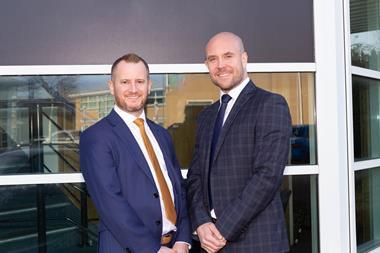Chief executive tells Insurance Times the company’s journey into a ‘reluctant MGA’
Rideshur is the story of a data platform company, which pivoted its business model to become a “reluctant MGA” by layering a real-time, commercial fleet insurance offering on top of its well-established data roots.

“We didn’t start off building an insurance product; we started out building a data platform to gather as much data from cars as possible, knowing that at some stage we’d find a way to monetise it,” explained Mark Musson, founder, chief executive and chief product architect at Humn.ai, the company behind Rideshur.
Using brains from the banking and technology sectors to build the service, which is “on an Amazon Web Services cloud”, Rideshur uses real-time data to create what Musson calls “dynamic pricing”.
“It’s really the first time that the power of pure data processing and risk management and [a] trading engine has been put to use in pricing insurance. We started in the commercial vehicles space in fleets as well, which is particularly hard,” Musson added.
“What we’ve been able to do is return all that fine grain data that we have, plus the geospatial risk model that we built about the real world, and put those things together to be able to segment that very coarse grained pricing into very fine grain pricing and then distribute the price.”
Rideshur uses its data abilities to price every single trip made. Musson explained: “The big difference is that we’re pricing every event [that] comes through the system, as opposed to creating a price at the point of quote taken for the insurance policy.
“At the end of every trip, their trip score is calculated and then together with a mileage component and a price component, that’s all combined and we actually price each individual trip based on where [the vehicle] has been driven and how the driver drove, as well as how far they drove.”
For him, this approach switches insurance from being retrospective to instead reacting to the real world as and when journeys happen.
He continued: “With Rideshur, you really can see in near real time what the exposure looks like, what your loss ratios are doing.
“We’re bringing certainty to previously uncertain risks with a data approach; that makes it possible to price more effectively and therefore make better data-driven pricing decisions about risk.
“For [brokers’] clients, it’s enabling [them] to use other rating factors than just how long you’ve been trading, where your garage location is and the value of your vehicles. [It provides] the ability to underwrite on significantly more factors.
“From an insurer’s perspective, where we excel is finding a safe portfolio because of the risk management component. [Also], through the data, [we] are able to have a much more transparent and fairer transaction between the insured and insurer and that’s really the power of it.”

“[It is] the ability to potentially write a lot of previously uninsurable risk, simply because there [wasn’t] enough data”, he added. “The reason some insurers won’t place you is because they don’t feel that they have enough data to understand the risk.”
Better use of data
For Musson, Rideshur’s entrenched data background is what gives the MGA its edge, in part because “the insurance industry is behind the curve” in its use of data, he said, despite “insurance [being] the original data industry”.
“A lot of data is being used but it’s being used at the point the quote is being generated, and then that’s it, that’s your price,” he continued.
“For me, it’s not so much about big data, but it’s really about streaming data or the more real-time aspects, which is really hard to do and it’s really hard to do well.
“To be able to change the price in near real time, as we can, that’s the key thing because what you’re doing then is responding to the real world and adjusting prices to changes in the real world rather than setting a price once and then coming back to check it and see if you were right in a year’s time.
“For me, it’s very much about live data rather than big data. Big data isn’t that challenging anymore to be honest.”
It’s in the detail
A unique element of Rideshur, according to Mark Musson, founder, chief executive and chief product architect at Humn.ai, the company behind Rideshur, is that the platform can “detect a near miss just from the sensor data from accelerometers and gyroscopes, not from video feeds”.

It is this type of data that enables Rideshur to inform pricing decisions for previously unpredictable markets, for example if a startup wished to lease cars to Uber drivers. Here, Musson said the startup will need insurance to operate, yet many insurers won’t know how to price the risk, or will not want to underwrite a new company, as there is no claims history or data to back up decision-making. This could act as a barrier to entry for new businesses.
Taxi drivers is another challenging market, Musson added, due to the milage typically driven – many insurers base their ratings on the belief that more time spent on the road leads to greater claims exposure, as the driver is more likely to be involved in an accident.
More detailed data in these fields, therefore, can create more certainty around the potential risks and offer clients more competitive insurance prices, Musson said.
Hosted by comedian and actor Tom Allen, 34 Gold, 23 Silver and 22 Bronze awards were handed out across an amazing 34 categories recognising brilliance and innovation right across the breadth of UK general insurance.





















































No comments yet